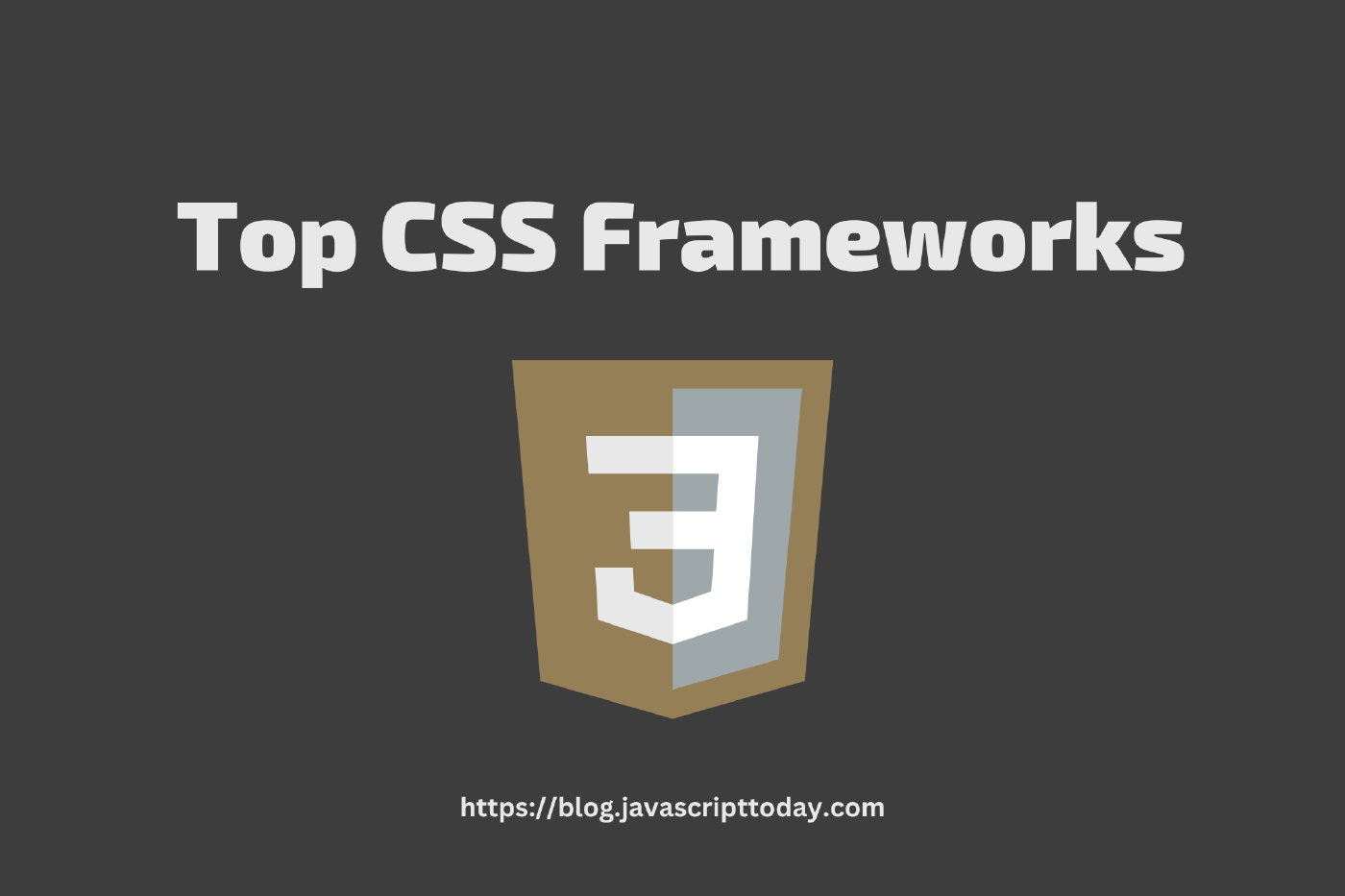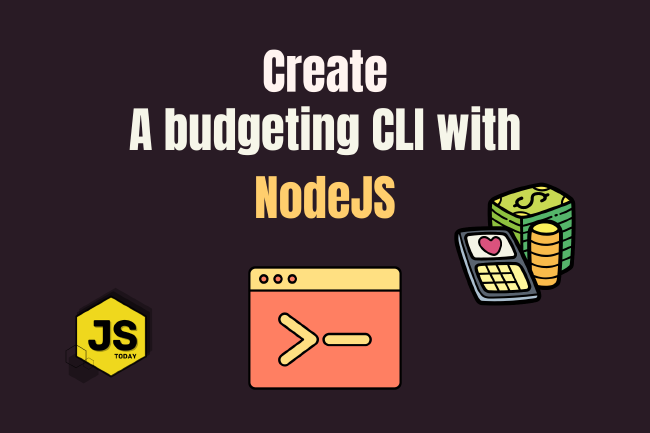Top CSS Frameworks in 2023
CSS frameworks have been a crucial part of web development for many years now. They offer a lot of pre-designed UI elements and styles that allow us developers to quickly and easily create beautiful and responsive websites.
With the constantly changing landscape of web development, new CSS frameworks are always emerging, and some older frameworks are becoming outdated. Here, we take a look at the top CSS frameworks that are expected to dominate the web development scene in 2023.
1. Bootstrap 5
Created by Twitter, Bootstrap is the most popular CSS framework in the world and is getting a major overhaul with its latest version, Bootstrap 5. The new version promises to bring a number of new features, improvements, and enhancements, making it even easier for developers to create responsive and beautiful websites.
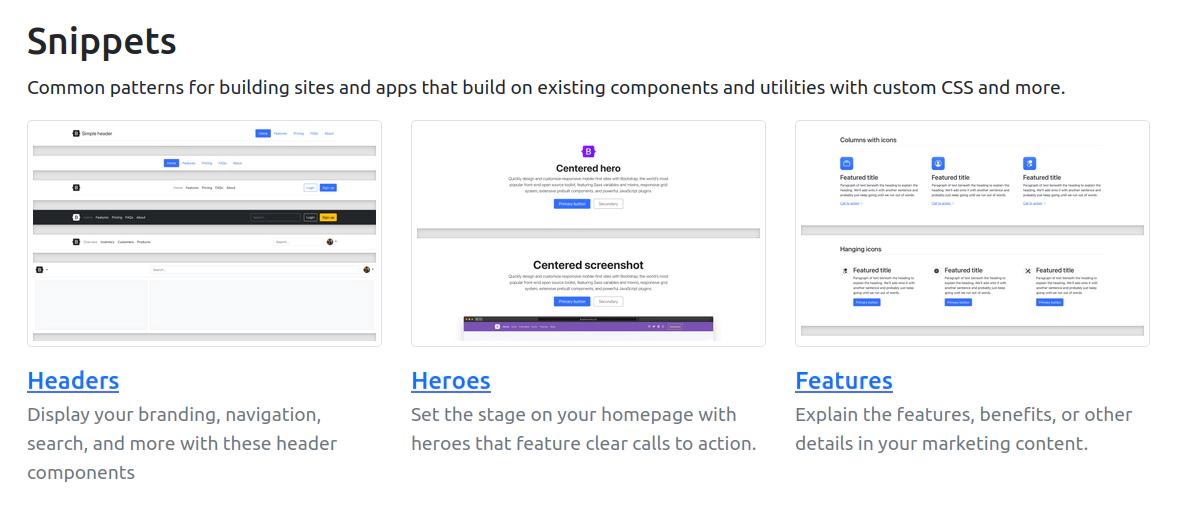
One of the biggest changes in Bootstrap 5 is the removal of jQuery as a dependency. jQuery has been a staple of Bootstrap for many years, but with the increasing popularity of modern JavaScript frameworks, its usage has become less necessary. By removing jQuery, Bootstrap 5 has become lighter and faster, making it a more attractive option for developers who want to build fast and responsive websites.
Another significant change in Bootstrap 5 is the introduction of custom styles for form controls. In previous versions of Bootstrap, form controls were limited to a few basic styles. However, in Bootstrap 5, developers can now use custom styles to create more complex and visually appealing forms. This means that websites can now have forms that match their brand and style, making them more user-friendly and accessible.
Bootstrap 5 also includes a number of new CSS components and utilities, including an improved grid system, new typography styles, and a more robust set of utility classes. These new features make it easier for developers to create complex layouts, apply custom styles, and take advantage of responsive design patterns.
One of the most exciting new features in Bootstrap 5 is the introduction of dark mode support. With more and more websites offering dark mode as an option, Bootstrap 5 makes it easy for developers to create dark mode-friendly websites. The framework includes a set of CSS variables and utility classes that make it simple to switch between light and dark modes, giving users the option to choose the mode that works best for them.
In conclusion, Bootstrap 5 is a major update to one of the most popular CSS frameworks in the world. With its focus on speed, accessibility, and customization, it is sure to become even more popular with developers and designers. Whether you’re a seasoned Bootstrap user or new to the framework, Bootstrap 5 is definitely worth checking out.
2. Tailwind CSS
Tailwind CSS is a new and innovative CSS framework that has taken the web development community by storm. It is a utility-first CSS framework that allows developers to quickly create fast, responsive, and beautiful websites with minimal CSS code.
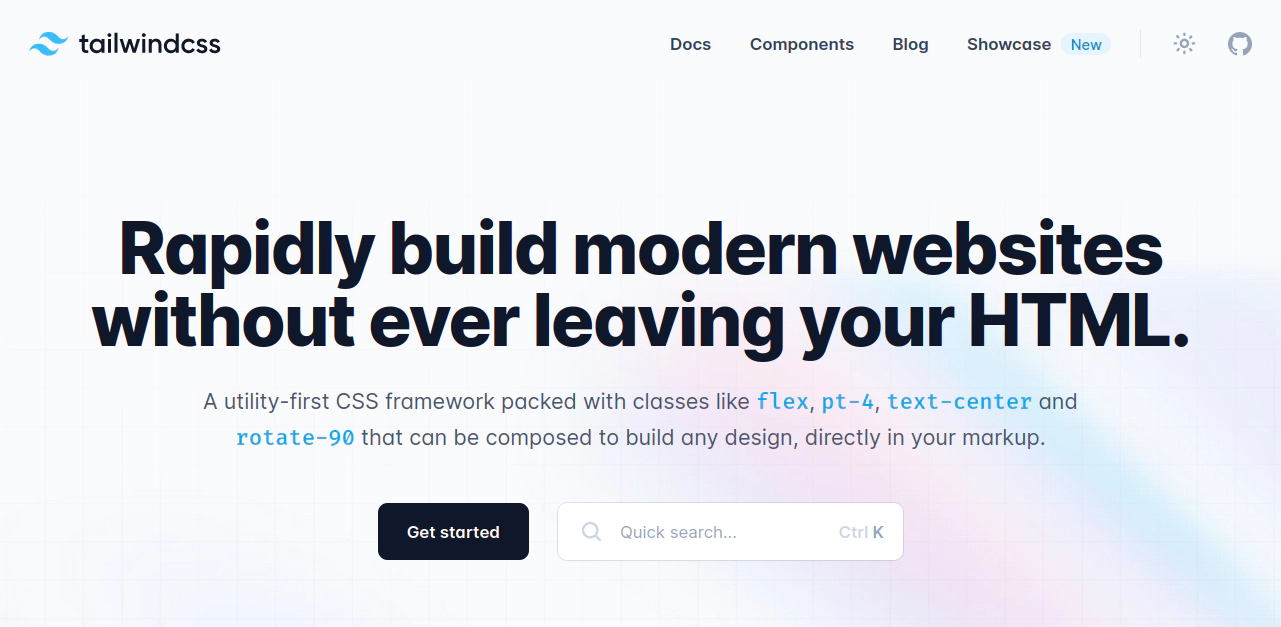
One of the unique features of Tailwind CSS is its utility-first approach. Unlike traditional CSS frameworks that provide pre-designed components, Tailwind CSS provides a set of utility classes that can be combined to create custom designs. This means that developers can build custom styles for their websites without writing any CSS code.
Tailwind CSS also provides a set of responsive design tools, making it easy for developers to create websites that look great on any device. The framework includes classes for controlling the size, spacing, and layout of elements, as well as classes for creating responsive typography and images.
Another great feature of Tailwind CSS is its performance. The framework is designed to be fast and efficient, and its utility-first approach means that the CSS code generated is minimal, making websites faster to load and easier to maintain.
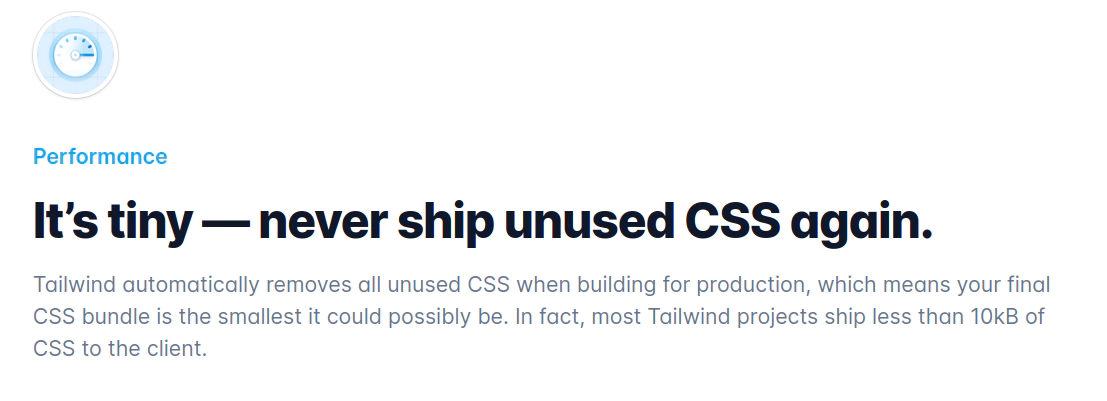
Tailwind CSS also includes a set of built-in accessibility features, making it easier for developers to create websites that are accessible to users with disabilities. The framework includes classes for controlling the color contrast of elements, as well as classes for creating keyboard-friendly interfaces.
Tailwind CSS is a revolutionary CSS framework that is changing the way developers build websites. With its utility-first approach, responsive design tools, performance, and accessibility features, it is quickly becoming the go-to choice for developers looking to create fast, responsive, and beautiful websites. Whether you’re a seasoned web developer or just starting out, Tailwind CSS is definitely worth learning and giving a try in your next project!
3. Foundation
Foundation CSS is a popular and powerful CSS framework that has been around for many years. It provides a solid foundation for building responsive and accessible websites, and has been used by many developers and organizations to create high-quality web projects.
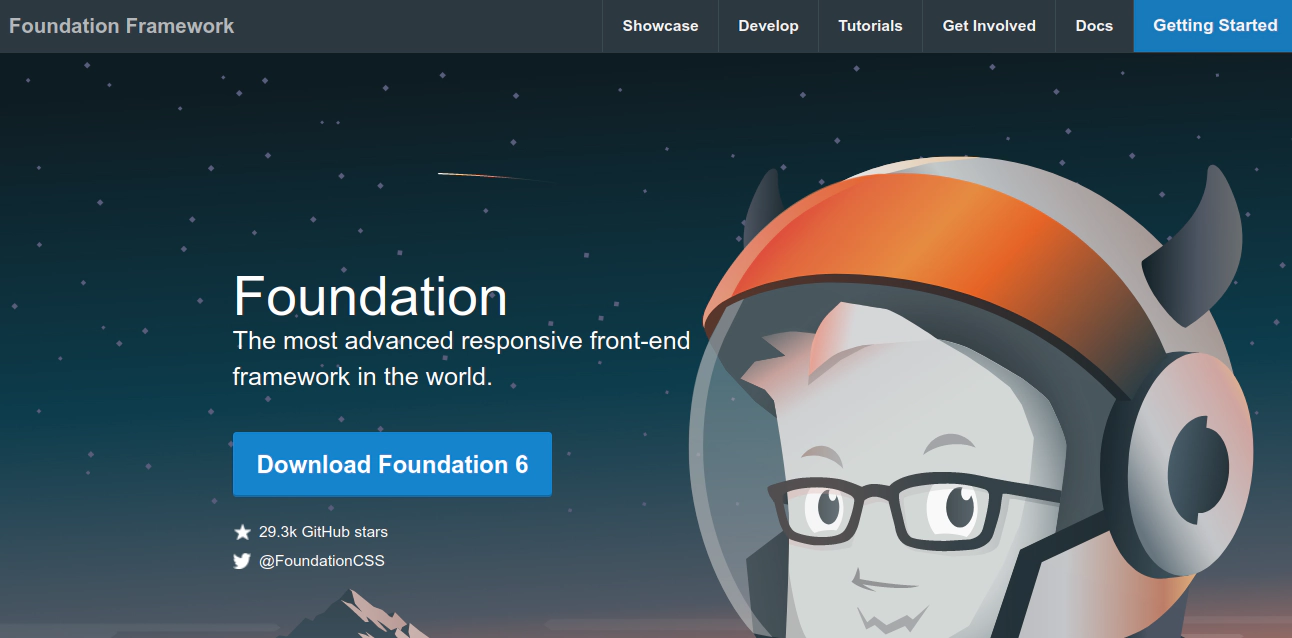
One of the key strengths of Foundation CSS is its versatility. The framework includes a wide range of CSS components and utilities, including a flexible grid system, UI elements, typography styles, and more. This means that developers can use Foundation CSS to create a wide range of different websites, from simple personal portfolios to complex e-commerce platforms.
Foundation CSS is also designed with accessibility in mind. The framework includes a range of accessibility-friendly features, including ARIA-compliant components, semantic HTML, and CSS classes for creating keyboard-friendly interfaces. This makes it easy for developers to create websites that are accessible to users with disabilities.
Another great feature of Foundation CSS is its performance. The framework is designed to be fast and efficient, and its modular design means that developers only have to include the components and utilities they need, reducing the size of the CSS file and improving website load times.
In addition to its core features, Foundation CSS also includes a number of advanced features for experienced developers. This includes custom Sass functions, mixins, and variables, which can be used to extend the framework and create custom styles.
Foundation CSS is a robust and versatile CSS framework that provides a solid foundation for building responsive and accessible websites. With its wide range of features, accessibility-friendly design, and performance, it is an excellent choice for developers looking to create high-quality web projects.
4. Bulma
Perhaps our favorite out of this list, Bulma is a modern and flexible CSS framework that has been gaining popularity among web developers in recent years.
It is a CSS-only framework that provides a comprehensive set of styles and components for building responsive and beautiful websites.
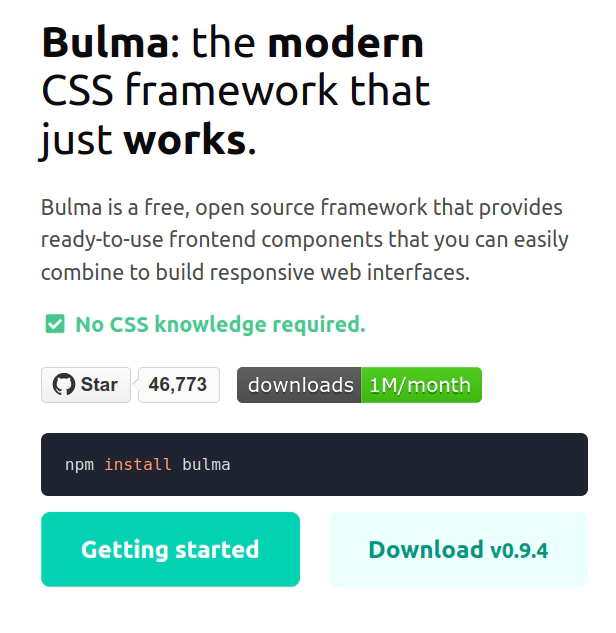
One of the key features of Bulma CSS is its simplicity. The framework is built with simplicity in mind, and its clean and straightforward design makes it easy for developers to quickly get up and running with the framework. The framework includes a range of components and styles, including a flexible grid system, UI elements, typography styles, and more, making it easy for developers to create a wide range of different websites.
Another great feature of Bulma CSS is its responsiveness (as with all of the CSS frameworks listed). The framework includes a range of responsive design tools, making it easy for developers to create websites that look great on any device.
The framework includes classes for controlling the size, spacing, and layout of elements, as well as classes for creating responsive typography and images.
Bulma CSS also includes a set of advanced features for experienced developers. This includes custom Sass functions, mixins, and variables, which can be used to extend the framework and create custom styles.
The framework also includes a number of plugins and extensions, allowing developers to easily add additional functionality to their websites.
Bulma is a modern and flexible CSS framework that provides a comprehensive set of styles and components for building responsive and beautiful websites.
With its simplicity, responsiveness, and advanced features, it is an excellent choice for developers looking to create high-quality web projects. Definitely give Bulma a try!
5. Semantic UI
In the world of web development, there is a constant demand for tools that make building user interfaces more efficient and less time-consuming.
One such tool is Semantic UI, a popular framework for designing and building responsive, intuitive, and visually appealing websites. This framework offers a range of features that make it an ideal choice for web developers looking to build high-quality and user-friendly interfaces.
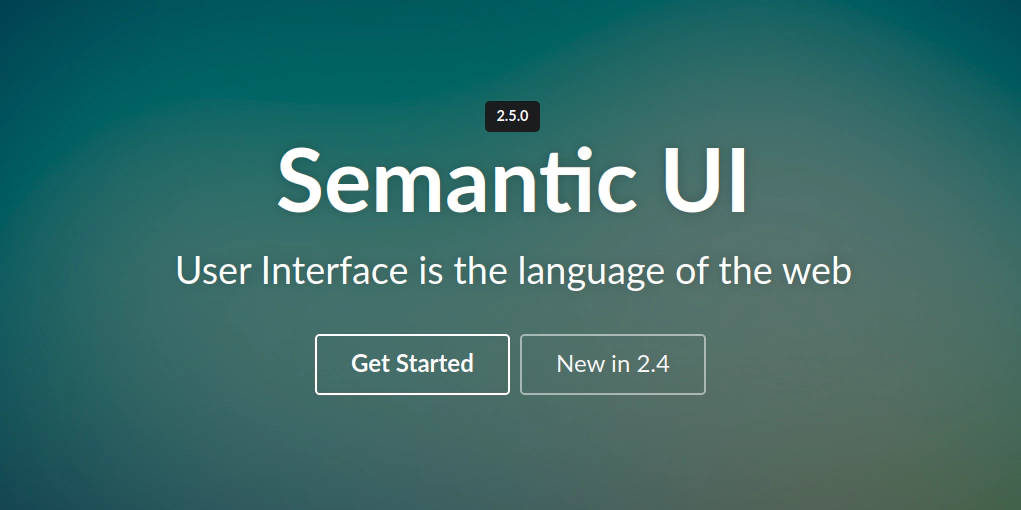
Semantic UI was first released in 2013 and has since become one of the most widely used front-end frameworks. It is a CSS framework that uses human-friendly HTML to style web applications and provides a wide range of UI components that can be used to build beautiful and functional web pages.
The framework is built on top of the Less CSS preprocessor and is designed to be easy to use and customizable, with a variety of customization options available to developers.
One of the most significant benefits of Semantic UI is its responsiveness. The framework is designed to automatically adjust to different screen sizes, ensuring that the user interface looks great on all devices, from desktop computers to smartphones. This makes it an excellent choice for building responsive and mobile-friendly websites and web applications.
Another key feature of Semantic UI is its comprehensive set of UI components.
The framework includes a wide range of components, including buttons, forms, icons, labels, loaders, messages, and more. Each component is designed to look and work consistently, making it easy for developers to create cohesive and visually appealing interfaces. Furthermore, the components are designed to be easily customizable, allowing developers to change the look and feel of their web pages as needed.
Semantic UI also provides a range of themes that can be used to quickly change the look and feel of a website. These themes can be customized to suit the specific needs of a project and can be used to create a variety of different styles, from modern and sleek to more traditional and classic. The themes can be applied globally or to individual components, making it easy to create a unique and visually appealing interface.
One of the biggest advantages of Semantic UI is its ease of use. The framework is designed to be simple to use, with a syntax that is easy to understand and write. The HTML-based syntax makes it easy for developers to write code quickly and efficiently, while the comprehensive documentation and examples make it easy to get started and understand how to use the framework effectively.
Semantic UI is a powerful and user-friendly framework for building responsive and visually appealing web interfaces.
Its wide range of features, including its responsiveness, comprehensive set of UI components, and customizable themes, make it an ideal choice for web developers looking to create high-quality and user-friendly websites and web applications.
Whether you’re building a new website or looking to update an existing one, Semantic UI is definitely worth looking into.
6. Materialize
The world of web development is constantly evolving, and developers are always in need of tools that can help them build modern and visually appealing web interfaces quickly and efficiently. One such tool is Materialize CSS, a popular front-end framework that is designed to make it easy to create high-quality and intuitive web pages and applications.
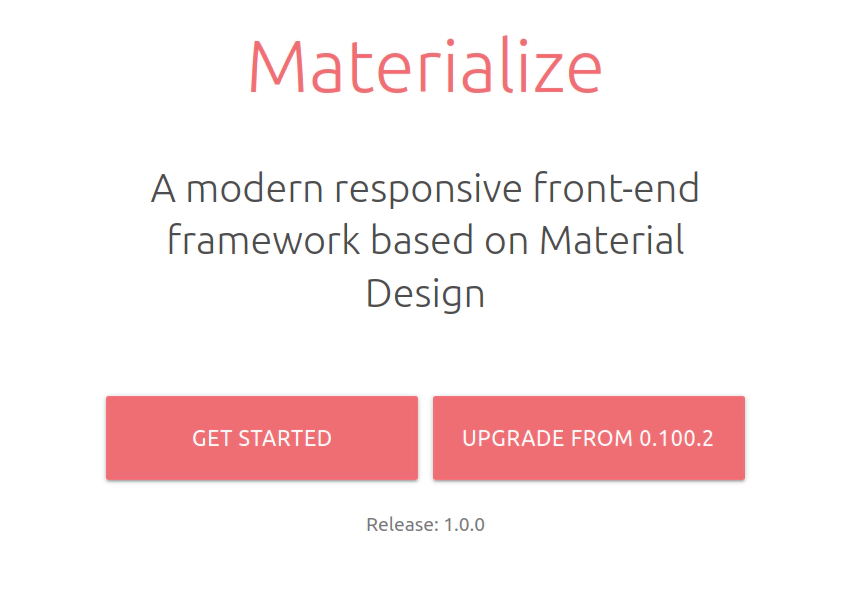
Materialize CSS is a CSS framework that was created based on the Material Design guidelines developed by Google. Material Design is a visual language that was created to provide a consistent and intuitive user experience across all devices and platforms. Materialize CSS brings this language to the web, making it easy for developers to create web pages that are visually appealing, functional, and intuitive.
One of the key features of Materialize CSS is its comprehensive set of UI components. The framework includes a wide range of components, including buttons, cards, forms, icons, navbars, and more. Each component is designed to look and work consistently, making it easy for developers to create cohesive and visually appealing interfaces. Furthermore, the components are designed to be easily customizable, allowing developers to change the look and feel of their web pages as needed.
Materialize CSS also provides a range of pre-built CSS classes that can be used to quickly change the look and feel of a website. These classes can be used to create a variety of different styles, from modern and sleek to more traditional and classic. The classes can be applied globally or to individual components, making it easy to create a unique and visually appealing interface.
Another advantage of Materialize CSS is its ease of use.
The framework is designed to be simple to use, with a syntax that is easy to understand and write. The comprehensive documentation and examples make it easy to get started and understand how to use the framework effectively, and the framework’s support for pre-built classes makes it easy to create modern and visually appealing interfaces quickly and efficiently.
Materialize CSS is also designed to be responsive, automatically adjusting to different screen sizes to ensure that the user interface looks great on all devices, from desktop computers to smartphones. This makes it an excellent choice for building responsive and mobile-friendly websites and web applications.
Materialize CSS is a modern and intuitive framework for building web interfaces. Its comprehensive set of UI components, pre-built CSS classes, and responsive design make it an ideal choice for developers looking to create high-quality and visually appealing web pages and applications.
7. Spectre.css
Spectre.css was first released in 2015 and has since become one of the most widely used CSS frameworks.
It is designed to be lightweight, with a small file size that makes it easy to load and fast to execute. This makes it an ideal choice for developers who want to build web pages and applications that are quick and responsive, without sacrificing quality or performance.
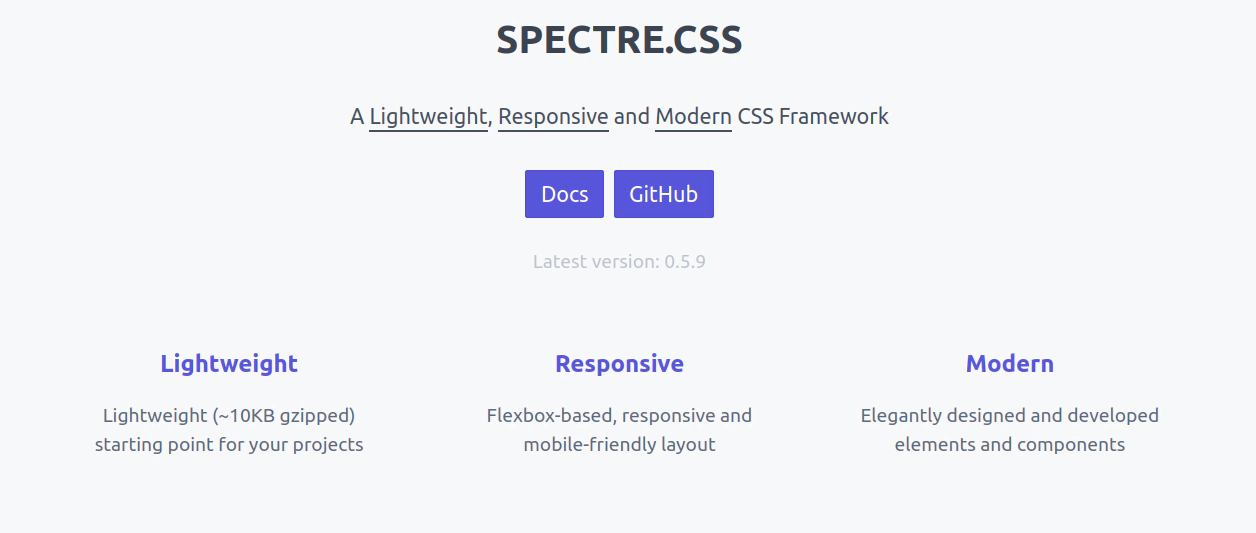
One of the key features of Spectre.css is its wide range of UI components.
The framework includes a range of components, including –
- buttons
- forms
- icons
- labels
and more, all of which are designed to look and work consistently. This makes it easy for developers to create cohesive and visually appealing interfaces, without having to spend hours writing custom CSS code.
Spectre.css is also designed to be easy to use, with a simple and straightforward syntax that is easy to understand and write. The comprehensive documentation and examples make it easy to get started and understand how to use the framework effectively, and the framework’s support for pre-built classes makes it easy to create modern and visually appealing interfaces quickly and efficiently.
Spectre.css is a lightweight and minimalist framework for building responsive and visually appealing web interfaces. Its wide range of UI components, customization options, and easy-to-use syntax make it an ideal choice for developers looking to create high-quality and efficient web pages and applications.
8. Ant Design
Ant Design was first released in 2016 and has since become one of the most widely used CSS frameworks.
It is designed based on the principles of Material Design, a visual language developed by Google that provides a consistent and intuitive user experience across all devices and platforms. Ant Design brings these principles to the web, making it easy for developers to create modern and visually appealing web pages and applications.

One of the key features of Ant Design is its comprehensive set of UI components. The framework includes a wide range of components, including buttons, cards, forms, icons, navbars, and more, all of which are designed to look and work consistently. Each component is also designed to be easily customizable, allowing developers to change the look and feel of their web pages as needed.
Another advantage of Ant Design is its support for internationalization. The framework includes support for multiple languages, making it easy to create web pages and applications that can be used by a global audience. The framework also provides a range of options for customizing the responsive behavior of a web page, making it easy to create interfaces that look great on all devices, from desktop computers to smartphones.
Ant Design is a comprehensive and intuitive CSS framework for building modern and visually appealing web interfaces. Its wide range of UI components, support for internationalization, and easy-to-use syntax make it an ideal choice for developers looking to create high-quality and efficient web pages and applications.
9. Milligram
Milligram is a minimalist CSS framework designed to make web development faster and easier. Developed by CJ Patoilo, it provides a simple and clean design aesthetic with a focus on performance, readability, and efficiency.
One of the key features of Milligram is its small size. The entire framework weighs in at just 2KB, making it one of the smallest CSS frameworks available!
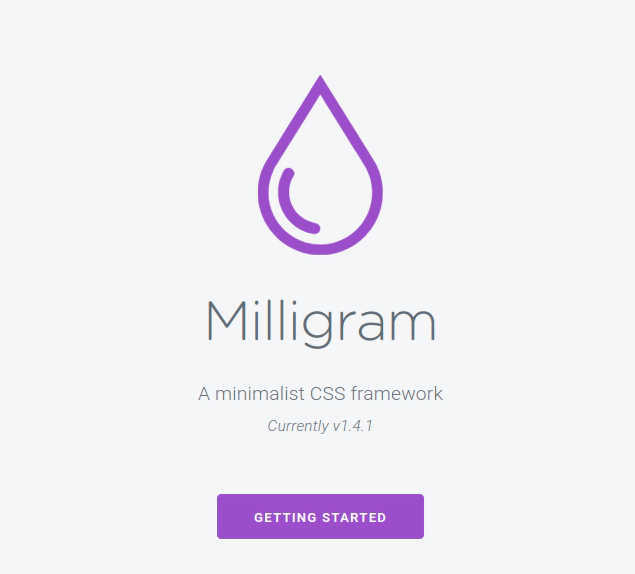
This not only ensures that pages load quickly, but it also means that it is easy to integrate into existing projects without adding significant bloat to your codebase.
Another important aspect of Milligram is its simplicity. Unlike other CSS frameworks that provide a lot of pre-designed components, Milligram focuses on providing a minimal set of basic styles that can be easily customized to suit your needs. This means that developers have greater control over the look and feel of their applications, and are free to add custom styles and components as needed.
In terms of functionality, Milligram provides a range of basic styles for common web elements, including typography, buttons, forms, tables, and more. It also includes a grid system that makes it easy to create complex and responsive layouts, and provides support for CSS flexbox, which allows for flexible and adaptable layouts that can be easily optimized for different screen sizes.
If you’re looking to streamline your web development process and build high-quality, performant applications, give Milligram a try.
Conclusion
It is also worth mentioning that when choosing a CSS framework, it is important to consider the specific needs of your project. Some frameworks may be better suited for certain types of projects, while others may be overkill for simpler projects. Factors to consider include the size of the project, the target audience, the desired style and aesthetics, and the level of customization required.
Another important factor to consider is the level of support and documentation available for the framework. A framework with good documentation and a large community of developers can be very beneficial, as it makes it easier to get help and find solutions to problems. On the other hand, a framework with limited support and documentation can be challenging to work with, especially for developers who are new to the framework.
In conclusion, CSS frameworks have become a crucial part of web development and are expected to continue to grow in popularity in 2023. The top CSS frameworks mentioned here offer a lot of pre-designed UI components, styles, and layouts that make it easy for developers to create beautiful and responsive websites. Whether you are a seasoned web developer or just starting out, one of these frameworks is sure to meet your needs.
Related Posts
The Art of Data Visualization: Exploring D3.js
Data is everywhere, flowing into our applications from various sources at an unprecedented rate. However, raw data alone holds little value unless it can be transformed into meaningful insights.
Read moreJavaScript’s Secret Weapon: Supercharge Your Web Apps with Web Workers
During an interview, I was asked how we could make JavaScript multi-threaded. I was stumped, and admitted I didn’t know… JavaScript is a single-threaded language.
Read moreCreating a NodeJS Budgeting Tool
In this article, we’re going to show you how to read and write to a .txt file using NodeJS by creating a small budgeting CLI (Command Line Interface).
Read more